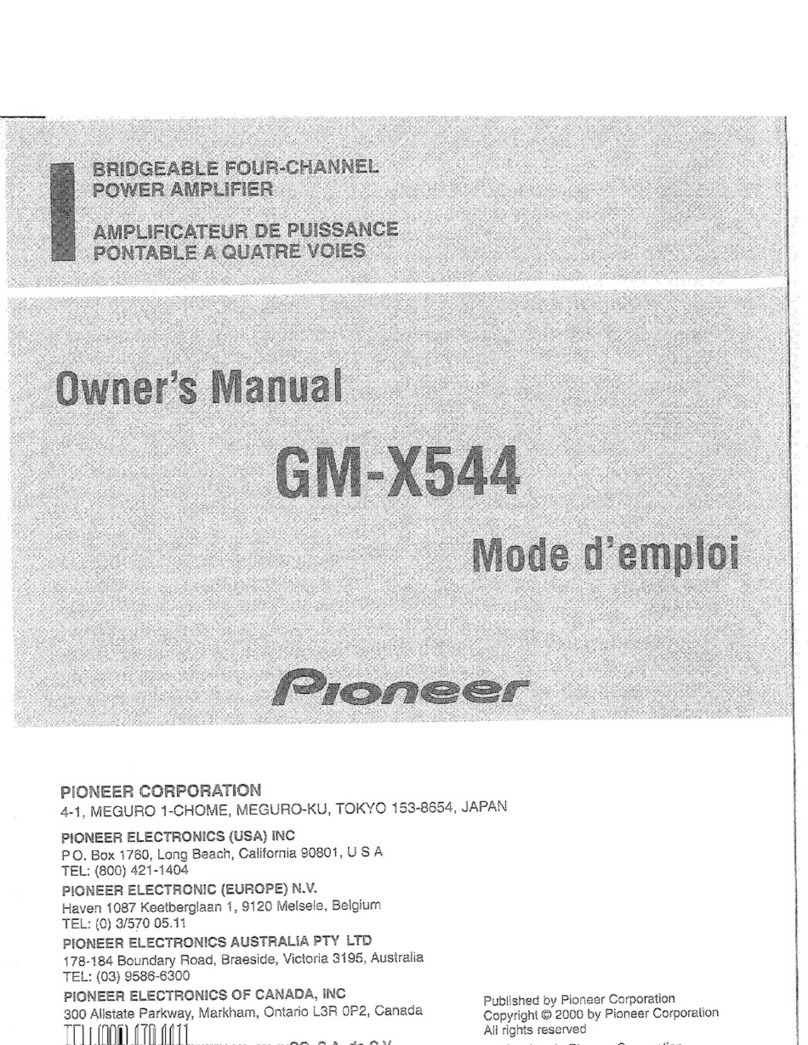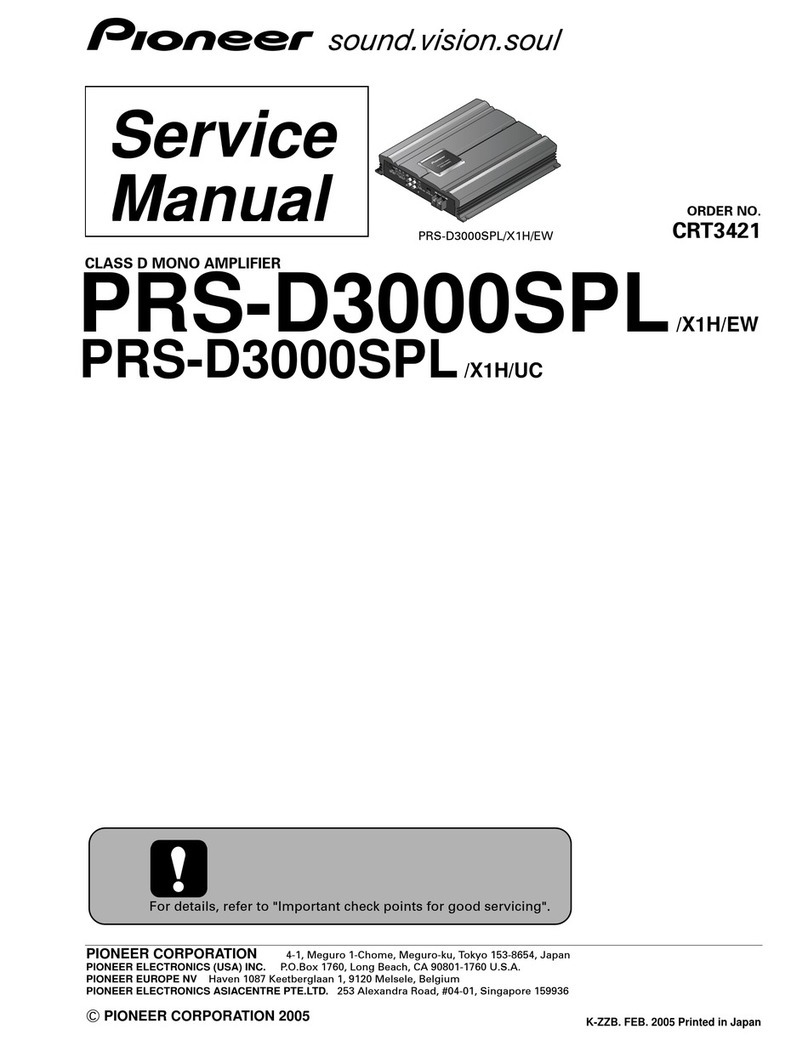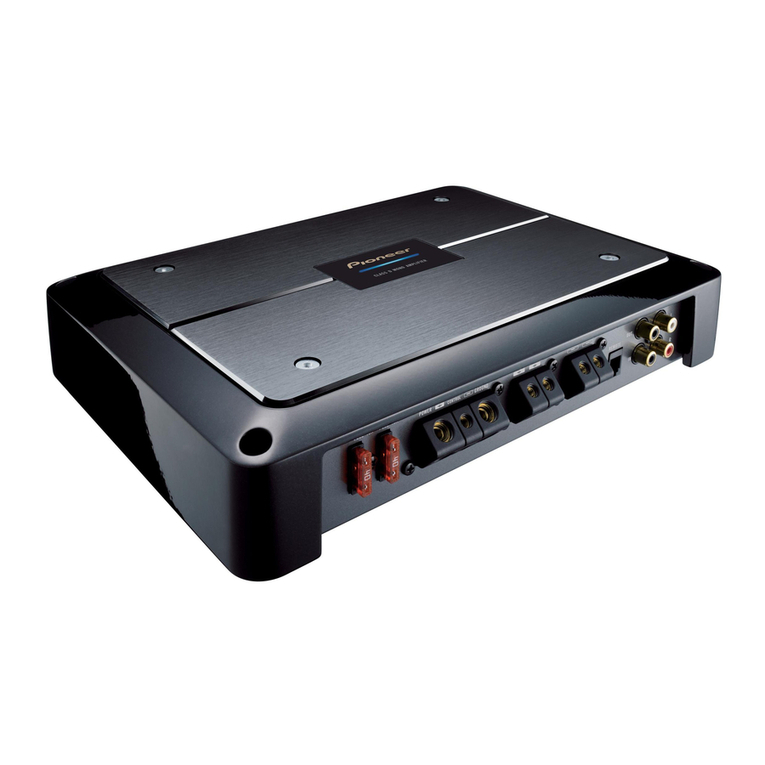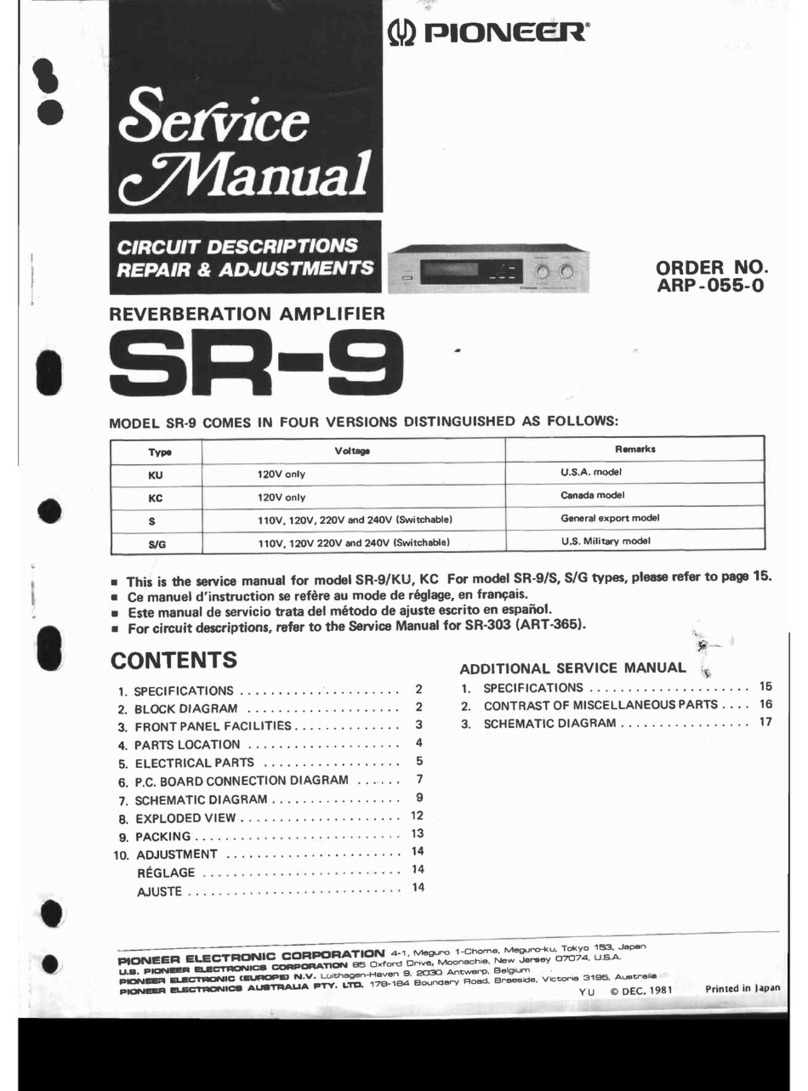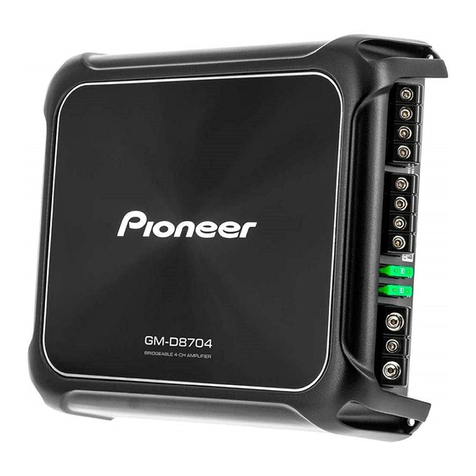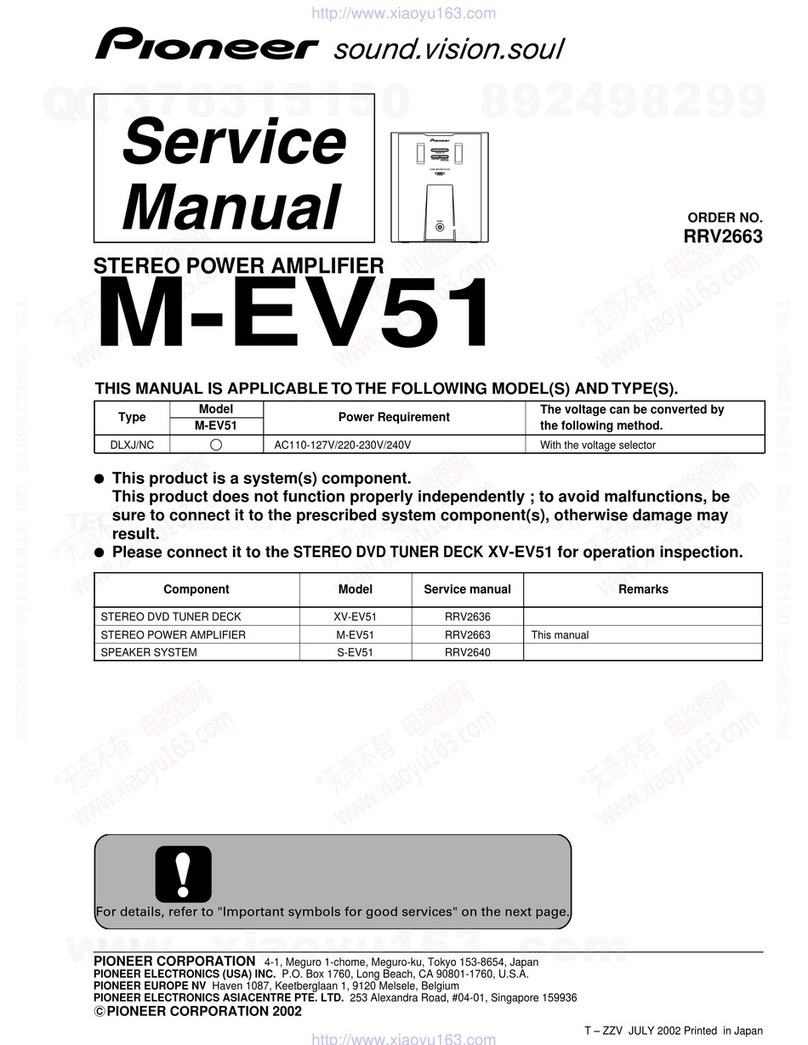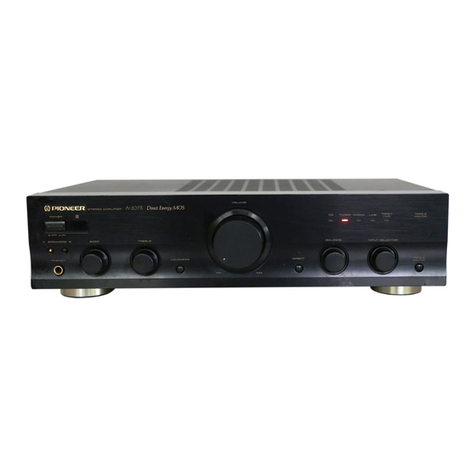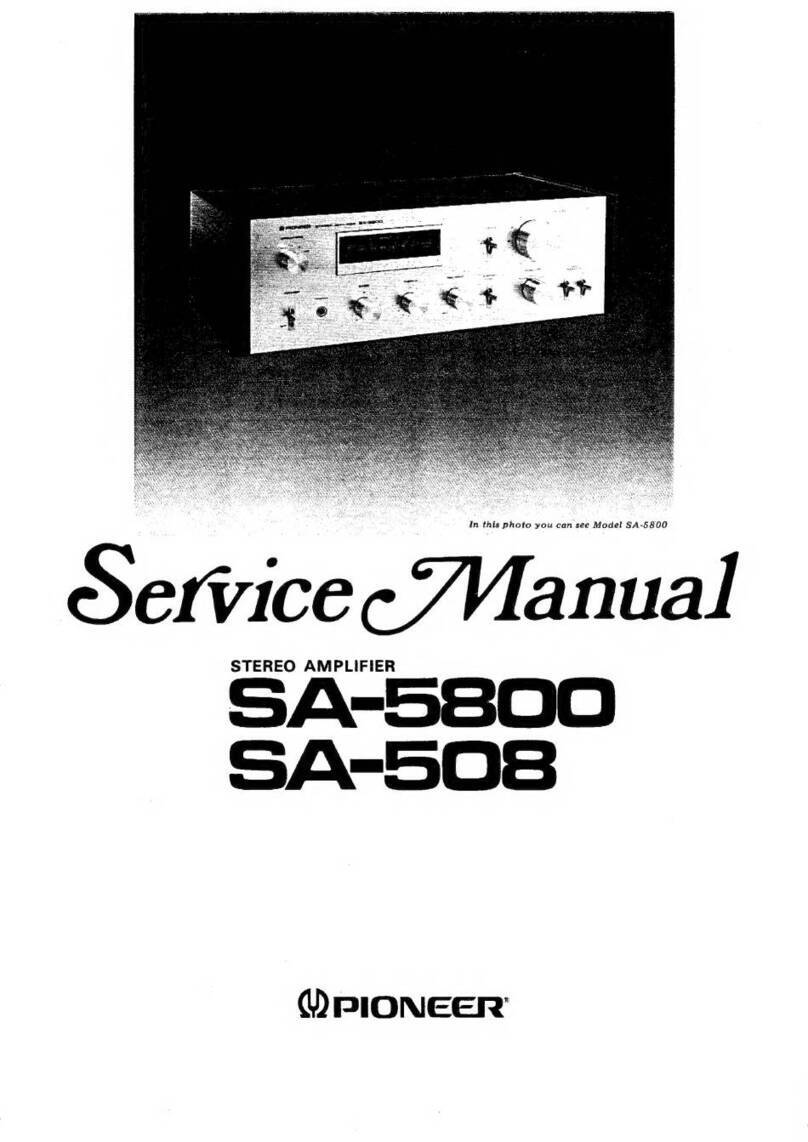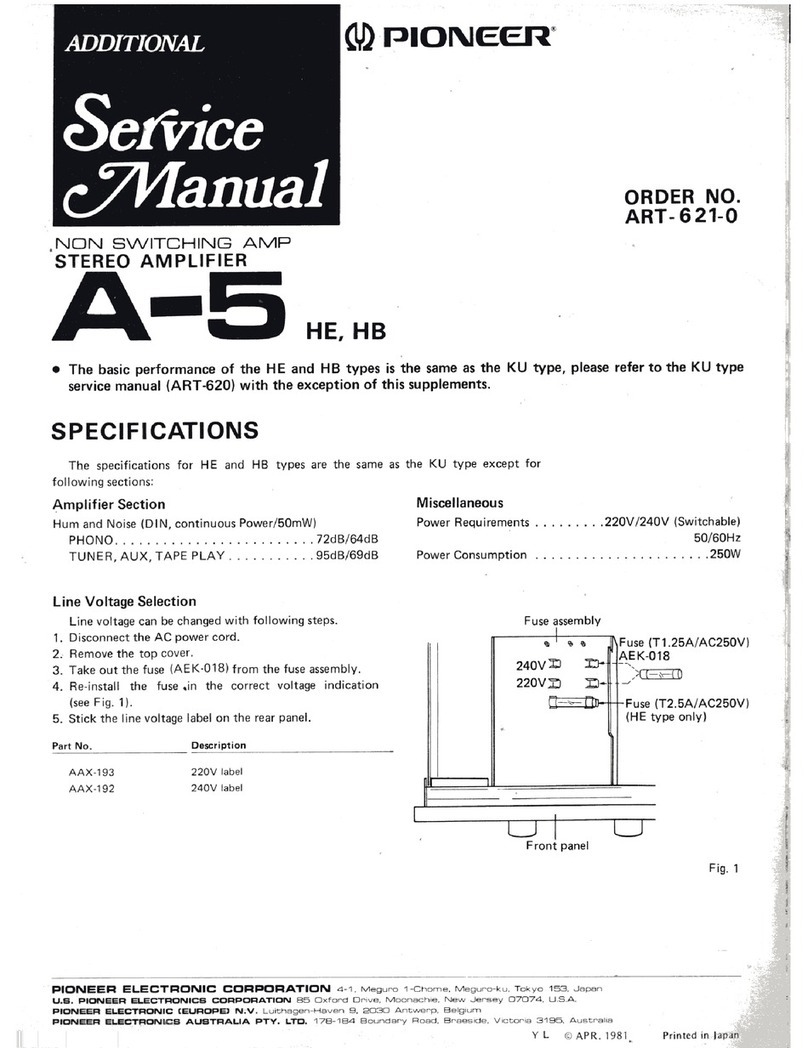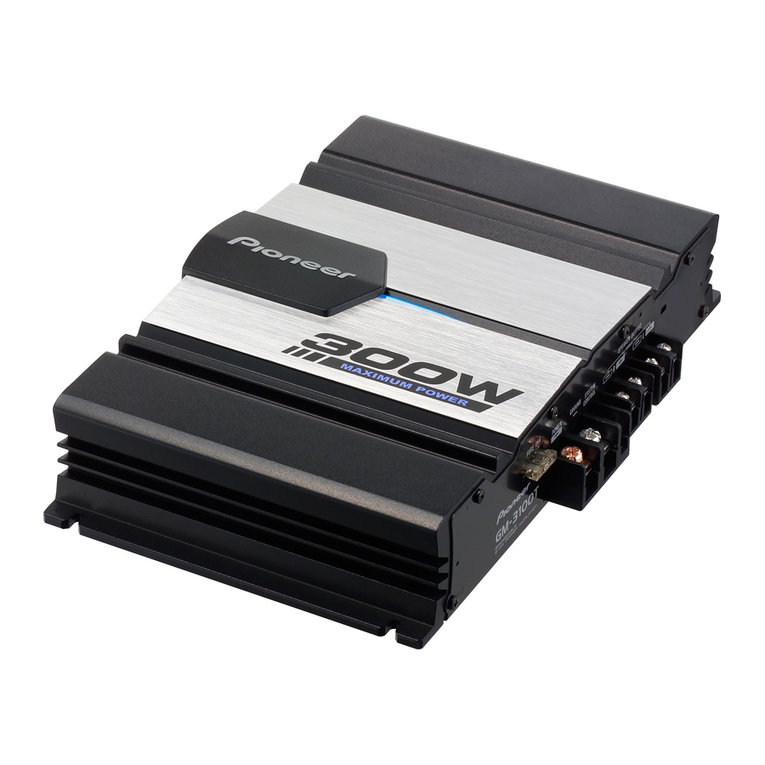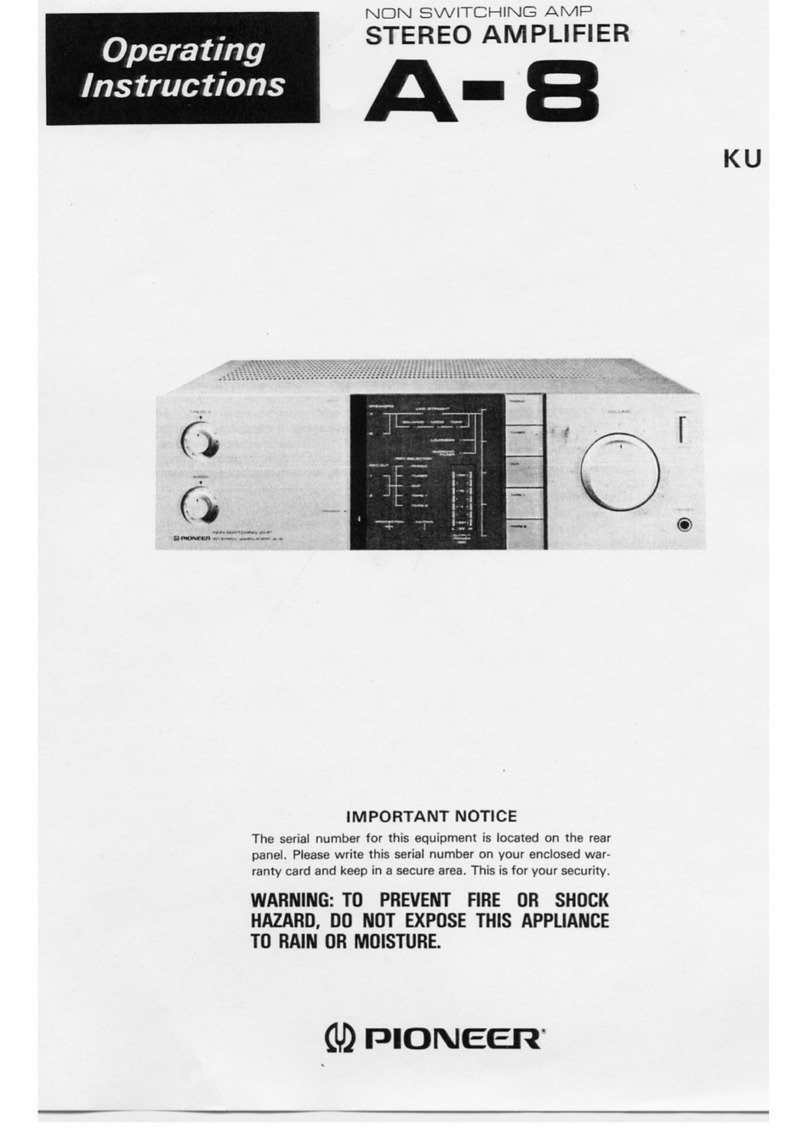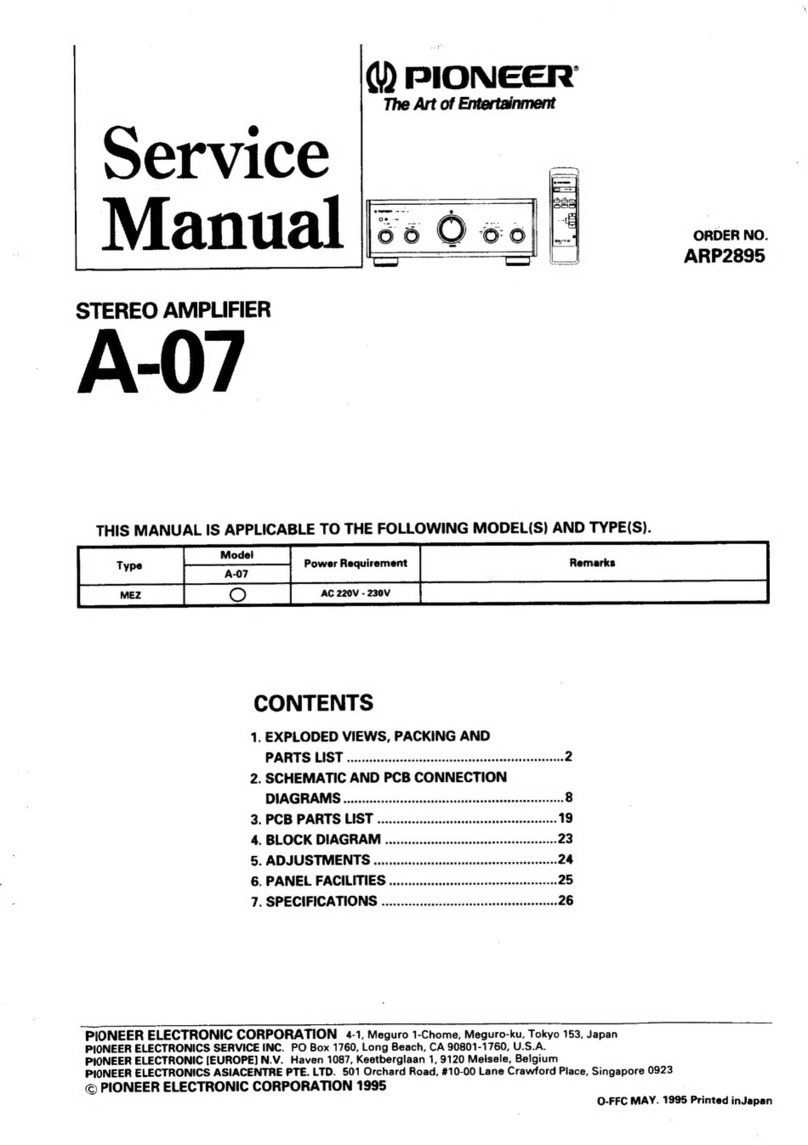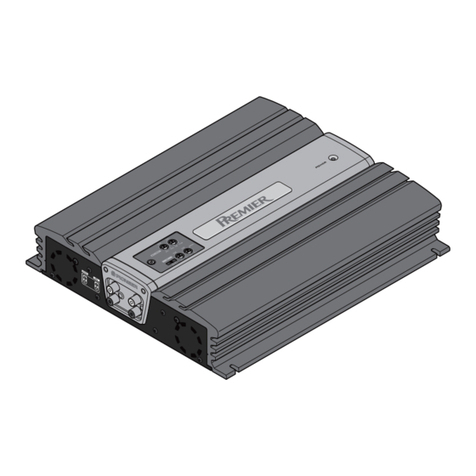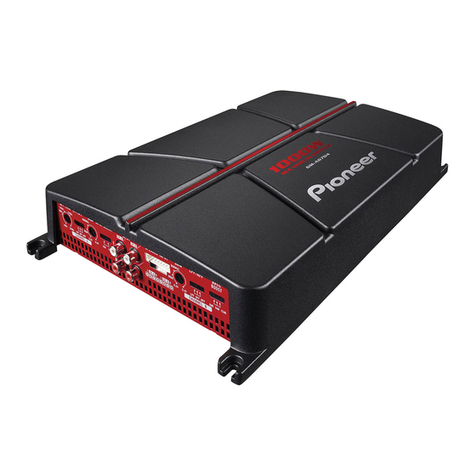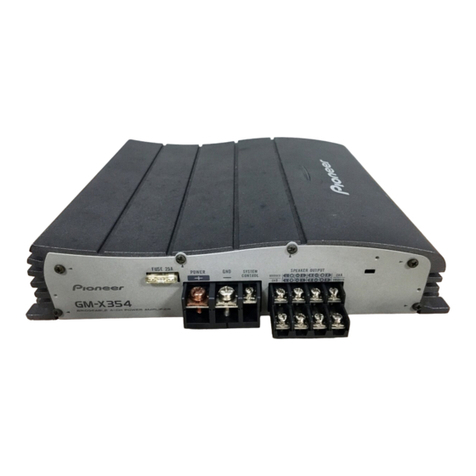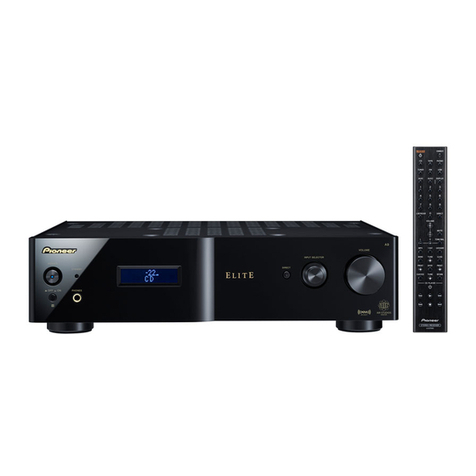n7.
CIRCUIT
DESCRIPTIONS
Equalizer
Amplifier
The 54,-610 features a 3-stagedirect-coupled
equalizer amplifier for greater reduction of noise
and distortion.
Besidesthe use of an ultra low-noise transistor
(25C26O2) in the first stage,the adoption of low
impedance input resistance and equalizer circuit
has contributed to an S/N ratio of at least 82dB
(at 2.5mV input, IHF-A).
Power
Amplifier
This all stage direct-coupled pure complemen-
taly SEPP circuit features a current mirror load
differential amplifier in the first stage,and incor-
porates the tone control circuit in the NFB loop.
Although the incorporation of the tone control
circuits in the power amplifier stage reduces the
number of elements that the signal has to pass
through, and thereby further reduces noise, dis-
tortion, and cost, the power stagedoes require a
higher gain and a higher degteeof stability. In the
SA-610, this high gain and high stability are
achieved by a cunent mirror load differential
amplifier in the first stage and by the use of a
constant current circuit for the load of the pre-
driver stage. Furthermore, the tendency for the
pre-driver stage capacitance impedance load to
cause deterioration in the high end frequency
response
is suppressedby inserting a capacitor (C)
between the emitter of the pre-driver stage(Q2)
and the baseof the constant current circuit (Q1) as
shown in Fig. 7-1. At frequencies where the
reactance of this capacitor may be ignored, the
push-pull action of Ql and Q2 serves
to counteract
the high end frequency response
deterioration.
The power amplifier stage is a complementary
2-stage' Darlington connection, resulting in an
output power rating of 45W + 45W (8Q, 20Hz-
2OkHz\, harmonic distortion of less than O.O37o
(20H2 20kHz at rated output), and output
power bandwidth of 5Hz - 50kHz (0.O3% THD).
Certainly a superb performance for an amplifier
of this classis obtained.
/. Constant current
/ circuit
)to o,,u.,..r"n"
\Pre-driver staga
siA-61 cl
Protection Circuit
Besides
protecting the speakers
if a DC voltage
should happen to appear at the power amplifier
stage outputs, this circuit also mutes the signal
path when the power switch is turned on and off
(See
Fig.7-2).
If for any reason a DC voltage (in excessof
about tbV) should happento appear
in the output
of the power amplifier stage,it is detected imme-
diately by either Q23 or q24. qn isturned on by
a positive voltage, and Q24 by anegative
voltage. In
either case,
Q25 is alsoturned off, thereby opening
the relay contact to disconnect
the power amplifier
stage
from the speakers.,
The muting action when the power switch is
turned on is achieved by delaying the rise of the
Q25 base
potential by means
of the R95/C77 time
constant circuit. When the power switch is turned
on, C77 is charged
up via R95, thereby increasing
the voltage across both ends of this capacitor.
When this voltage exceedsthe zener voltage of the
D15 zener diode, Q25 is biased in the forward
direction, and is thereby tumed on to close the
relay contact.
When the power switch is turned off., C77
discharges
rapidly via D18, resulting in Q25 being
turned off, thereby opening the relay contact.
L CH SP OUT
R CH SP OUT
Fig.
7-2 Frotectioncircuit
!f'
rl
I
f,
I
iF
Fig.7-1 Pre-driverstage

